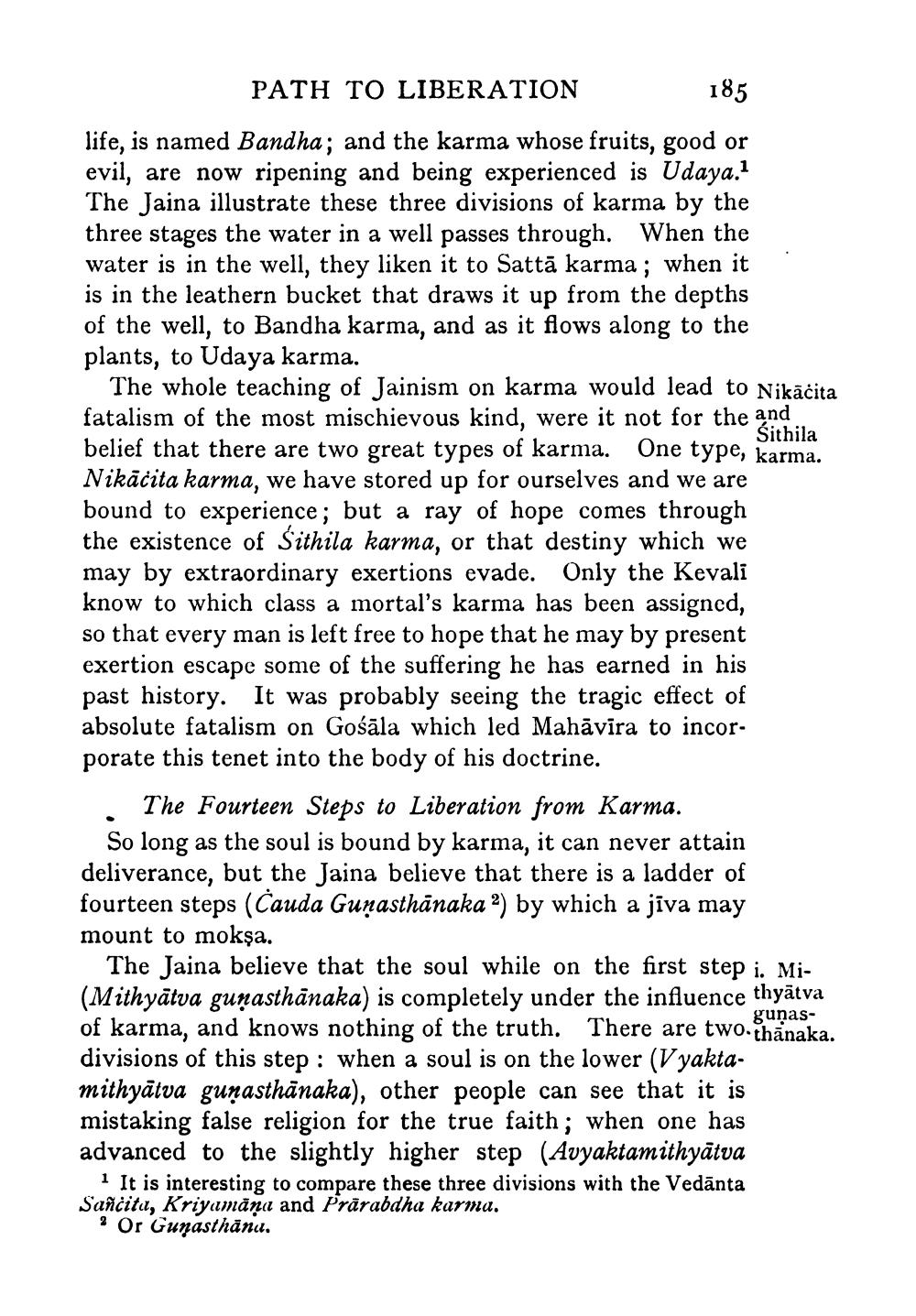________________
PATH TO LIBERATION
185
life, is named Bandha; and the karma whose fruits, good or evil, are now ripening and being experienced is Udaya. The Jaina illustrate these three divisions of karma by the three stages the water in a well passes through. When the water is in the well, they liken it to Sattā karma; when it is in the leathern bucket that draws it up from the depths of the well, to Bandha karma, and as it flows along to the plants, to Udaya karma.
The whole teaching of Jainism on karma would lead to Nikāčita fatalism of the most mischievous kind, were it not for the and.,
Sithila belief that there are two great types of karma. One type, karma. Nikāčita karma, we have stored up for ourselves and we are bound to experience; but a ray of hope comes through the existence of Sithila karma, or that destiny which we may by extraordinary exertions evade. Only the Kevali know to which class a mortal's karma has been assigned, so that every man is left free to hope that he may by present exertion escape some of the suffering he has earned in his past history. It was probably seeing the tragic effect of absolute fatalism on Gośāla which led Mahāvīra to incorporate this tenet into the body of his doctrine.
The Fourteen Steps to Liberation from Karma. So long as the soul is bound by karma, it can never attain deliverance, but the Jaina believe that there is a ladder of fourteen steps (Cauda Gunasthānaka 2) by which a jīva may mount to mokşa.
The Jaina believe that the soul while on the first step i. Mi(Mithyātva gunasthānaka) is completely under the influence thyātva of karma, and knows nothing of the truth. There are two thānaka. divisions of this step : when a soul is on the lower (Vyaktamithyātva gunasthānaka), other people can see that it is mistaking false religion for the true faith; when one has advanced to the slightly higher step (Avyaktamithyātva
1 It is interesting to compare these three divisions with the Vedānta Sañčitu, Kriyamana and Prärabdha karma.
? Or Gunasthānu,
gunas




